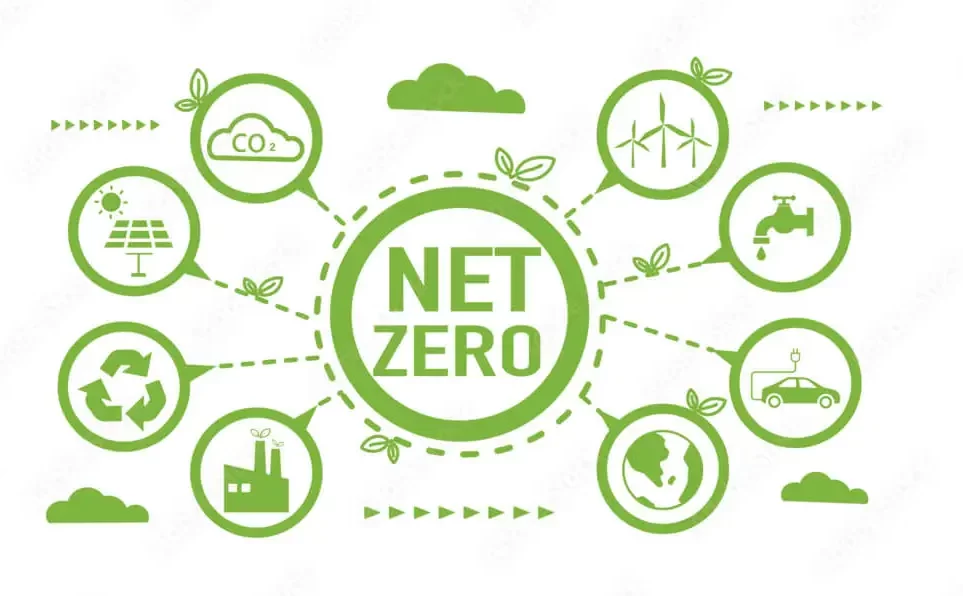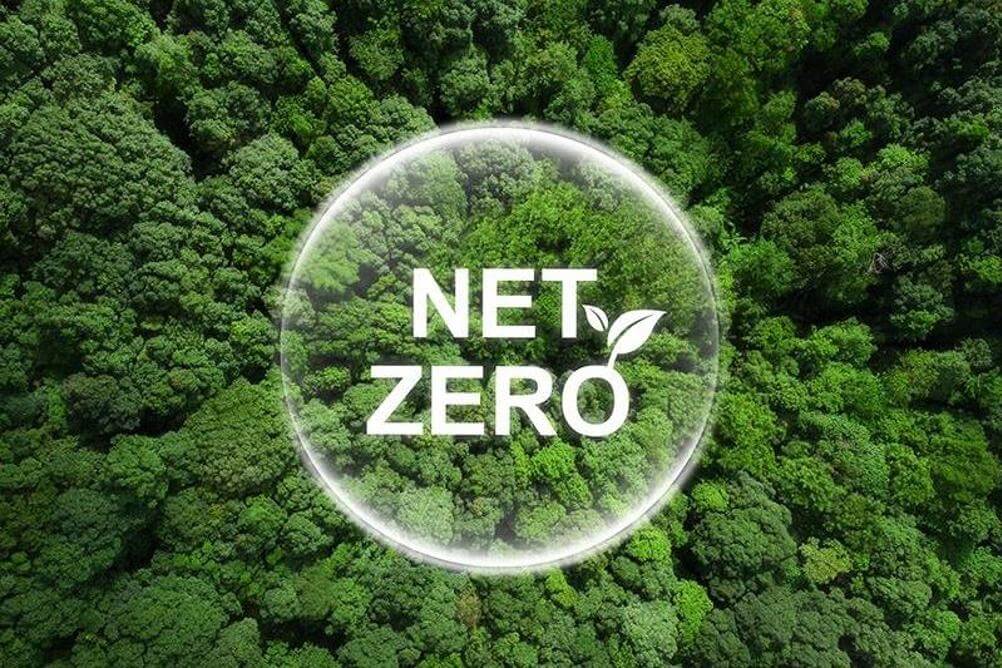Practical Strategies for Implementing Net Zero in Finance

In an era marked by climate crisis, the finance sector plays a pivotal role in facilitating the transition to a low-carbon economy. As the public and private sectors ramp up efforts to combat climate change, the concept of ‘Net Zero’ has emerged as a beacon for sustainability, challenging finance professionals to re-evaluate their practices and redefine success. Embracing a Net Zero approach is not just a moral obligation; it’s also a strategic imperative that can lead to competitive advantage, operational efficiency, and long-term business resilience.
This in-depth guide is tailored for finance professionals, sustainability enthusiasts, and anyone eager to make tangible contributions to our planet’s well-being. We’ll dive into the essence of Net Zero in finance and offer a pragmatic roadmap for implementation. Through a thorough examination of strategies, case studies, and relevant resources, our goal is to equip you with the knowledge and motivation to steer the finance sector towards sustainability leadership.
The Essence of Net Zero in Finance
Defining the Concept
At its core, achieving Net Zero in finance means reaching equilibrium between the amount of greenhouse gas emissions produced and the offset of these emissions through carbon removal technologies or other methods. For financial institutions, this journey encompasses not only reducing the direct emissions associated with their operations (Scope 1), but also those from the energy they purchase (Scope 2), and most significantly, the broader impacts from the services and products they finance (Scope 3).
Why It Matters in Finance
The world is pivoting towards a decarbonized future, and the finance sector is under increasing pressure to respond. Banks, asset managers, pension funds, and other financial actors directly influence the economy’s trajectory by allocating capital. By integrating Net Zero principles into their decisions, these entities can significantly impact the reduction of global emissions and support a climate-resilient economy.
Benefits of Implementing Net Zero
Implementing Net Zero strategies does not only avert catastrophic climate change; it also positions financial institutions to reap multiple benefits.
Environmental Impact Reduction
Operating under a Net Zero model allows financial institutions to effectively minimize their environmental footprint. By investing in low-carbon projects and curbing their support for high-emission activities, these entities become part of the solution and contribute to the global target of limiting global warming to well below 2 degrees Celsius above pre-industrial levels.
Competitive Advantage and Market Leadership
Consumers and investors alike are increasingly favoring sustainable entities, and financial institutions are no exception. Adopting Net Zero can enhance brand value, attract new clients, and foster loyalty among existing customers, thereby gaining a competitive edge in a rapidly shifting market where sustainability is a benchmark for success.
Regulatory Compliance and Risk Mitigation
As policies and regulations across the globe become more stringent in a bid to limit carbon emissions, financial entities that are ahead of the curve will find themselves better prepared for regulatory changes. Moreover, by financing sustainable projects and companies, they reduce exposure to the risks associated with climate change and support the resilience of the financial system.
The Roadblocks to a Net Zero Finance Future
While the benefits are clear, the path to Net Zero is fraught with challenges that demand careful navigation.
Cost Implications and Business Viability
One of the significant obstacles is the perceived or real cost of transitioning to sustainable practices. Financial institutions must carefully consider the economic implications of their sustainability strategies, especially amidst a competitive environment where short-term profits often take precedence over long-term environmental gains.
Data Availability and Accuracy
Accurate measurement and reporting of carbon emissions and related financial activities are essential for informed decision-making. However, availability and consistency of data can vary, leading to challenges in establishing a reliable baseline and tracking progress towards Net Zero.
Change Management and Stakeholder Engagement
Transitioning to a Net Zero model requires commitment and participation across all levels of an organization. Ensuring that teams understand the importance of Net Zero and are empowered to act is a critical yet often overlooked aspect of the journey.
Practical Strategies
Charting a course to Net Zero is no small feat, and it requires a comprehensive approach that integrates sustainability across all facets of finance operations and decision-making. Here are practical strategies to start or advance the journey towards Net Zero in the finance sector.
1. Establish Your Starting Point
Before setting targets or crafting strategies, it’s crucial to establish a comprehensive understanding of your institution’s current carbon footprint. This entails capturing emissions across all scopes and identifying the key drivers of your institution’s impact. Without a robust baseline, it’s impossible to measure progress accurately or establish meaningful targets.
2. Establish Science-Based Targets and Concentrate on Reducing Emissions
Once you have a clear understanding of your baseline, the next step is to set ambitious yet achievable goals in line with climate science. Science-based targets ensure that your institution’s efforts align with the overarching goal of the Paris Agreement. Aim for significant reductions in emissions and prioritize the most impactful areas for intervention.
3. Develop a Path to Achieve Net Zero Emissions and Establish Accountability
A phased approach with clear milestones is instrumental for staying on track. Develop a roadmap that outlines specific actions, timelines, and responsibilities for achieving your Net Zero goals. It’s vital to embed accountability in your strategy, allowing for transparency and demonstrating progress to stakeholders.
4. Incorporate Net-Zero Goals Into Fundamental Business Strategy
Sustainability must be at the heart of your institution’s business model. This includes integrating ESG (Environmental, Social, and Governance) considerations into investment and lending decisions, developing green financial products, and fostering a culture of sustainability across your organization.
5. Before engaging in carbon offsetting, research thoroughly
Offsetting can be a valuable tool in the path to Net Zero, but it should not be a substitute for actual emission reductions. Select high-quality offset projects that have robust monitoring, reporting, and verification mechanisms, and ensure that they contribute to additional emissions reductions that would not have occurred otherwise.
6. Investing in Innovation for Achieving Net Zero Goals
Supporting and/or investing in innovative, low-carbon technologies and solutions can accelerate the transition to a Net Zero economy. Encourage research and development in areas like renewable energy, sustainable agriculture, and carbon capture, utilization, and storage (CCUS).
7. Collaborate with Your Top Suppliers to Minimize Scope 3 Emissions
Engage with your supply chain to drive sustainability throughout your value chain. Collaborate with your Tier-1 suppliers to identify and address the shared environmental impacts of your operations and products.
8. Using Leaf for accountability and transparency
Consider utilizing cutting-edge software solutions like Leaf to streamline your sustainability reporting and enhance transparency. Such tools can simplify the carbon accounting process, help in data aggregation, and enable your institution to effectively track, monitor, and communicate its progress toward Net Zero.
Conclusion
Implementing Net Zero strategies in the finance sector is not an abstract concept or a mere trend. It is a concrete response to the climate crisis and a commitment to stewarding a sustainable future for our global economy. As you’ve delved deep into the practical strategies for achieving Net Zero in finance, we encourage you to integrate these insights into your institution’s mission and operations
Ecuador's Zero Carbon Programme is a testament to the country's commitment to sustainability, setting a global example. This guide highlights the program's strategies, benefits, and how businesses can align with these green initiatives.
Global Net Zero Programs leading the charge towards sustainability. From Latin America's innovative policies to the EU's Green Deal, this guide illuminates the path to a greener future for businesses, policymakers, and individuals.
Colombia's Carbon Neutral National Program is a beacon for sustainable transformation, blending ambitious goals with actionable strategies. This guide delves into its impact on businesses and society, showcasing the path to a greener future.
The Future of Finance: Banks' Strategic Path to Net Zero Compliance. Discover how banks can lead the charge towards a sustainable future by aligning with the Net Zero Banking Alliance.
The pivotal role of Net Zero in transforming the finance sector towards sustainability. This comprehensive guide delves into actionable strategies, pioneering examples, and the future of banking with Net Zero goals.
Glasgow Financial Alliance for Net Zero (GFANZ): A groundbreaking initiative uniting the world's leading financial institutions in the quest for a sustainable future. Learn how GFANZ is steering the global finance sector towards net-zero emissions by 2050, aligning billions in assets with the goals of the Paris Agreement.
Join the transformative journey with the Net Zero Banking Alliance: A global initiative uniting banks in the fight against climate change. Discover how over $130 trillion in assets are being steered towards a sustainable future, fostering innovation, and driving the banking industry towards a net-zero carbon economy.







